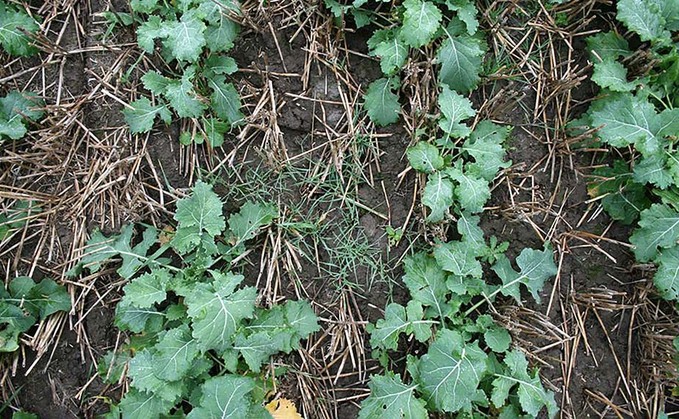
As the late November ŌĆśsweet spotŌĆÖ for applications of propyzamide approaches, growers are being warned that the herbicide could be lost if rising levels of leaching into water are not curbed.
Speaking at a British Crop Production Council weeds review meeting in Cambridge, Anglian Water senior agronomy adviser Richard Reynolds said the water company had come close to shutting down Grafham Water reservoir in Cambridgeshire, EnglandŌĆÖs third largest reservoir, because of propyzamide exceedances in water samples.
The herbicide is used for grass- and broad-leaved weed control in winter oilseed rape and winter beans.
Mr Reynolds said: ŌĆ£We would normally only be doing that in terms of metaldehyde. What we are seeing is more and more big spikes [in propyzamide]. When those massive spikes come through, that is what overwhelms the treatment works.ŌĆØ
Joe Martin, arable field technical manager with Corteva, which supplies propyzamide-based herbicides in its AstroKerb and Kerb Flo range, highlighted the optimum conditions for application of propyzamide and expressed concern over anecdotal reports that some growers and agronomists had applied the herbicide early this autumn.
Mr Martin said: ŌĆ£Propyzamide works best when applied to cold, moist soils. The sweet spot for application tends to be around the end of November. Go too early ŌĆō and there have been reports of growers going earlier this year ŌĆō and soil temperatures are still relatively high and you are going to get very quick degradation and run out of persistency.ŌĆØ
He also advised against the practice of double-dosing propyzamide, where an application is made slightly earlier than recommended in autumn, followed by a second spray in January.
Mr Martin said: ŌĆ£That is not something we would recommend. Ideally, apply one dose.ŌĆØ
Propyzamide timing and dose rate trials
Corteva started a trials programme last autumn looking at spray application timing and propyzamide rates.
Three rates of propyzamide were applied in the trials in mid to high black-grass populations, across a range of application timings from early October through to the last two weeks of January.
Very early applications made at the beginning of October and even those made towards the end of the month did not give the required levels of black-grass control.
Mr Martin said: ŌĆ£In terms of timing, that last week in November was the right timing.ŌĆØ
Nor was sufficient control achieved with a 500g/hectare rate, he added. There was, however, little difference in the level of black-grass control achieved with 750g/ha and 840g/ha rates of propyzamide.
There was no increase in control from double-dosing compared to a single application, said Mr Martin.
ŌĆ£You are wasting money and, by putting too much propyzamide on, are increasing the risk of leaching to water.ŌĆØ
He also advised that Corteva has requested a label amendment for its propyzamide products, which is currently being considered by CRD, which would stipulate a maximum dose of propyzamide of 840g/ha per crop per year
Herbicide sequencing to manage the risk
Independent grass-weed expert Dr Stephen Moss shared details of trials he has been doing on behalf of UPL, Affinity Water and Anglian Water to reduce the amount of propyzamide getting into water by using herbicide clethodim (Centurion Max) in sequence with a reduced rate of propyzamide.
No compromise in black-grass control was seen where clethodim was applied followed by a 500g/hectare reduced rate of propyzamide, but a 91 per cent reduction in the amount of propyzamide in soil water was seen by dropping the propyzamide rate from 850g/ha to 500g/ha in a December application.
Dr Moss said: ŌĆ£We have some evidence of reducing the amount of propyzamide leaching into water, but we want to do more work on that.
ŌĆ£This idea is not about saving money, but more about saving propyzamide.
ŌĆ£The simple truth is, if nothing happens, this problem increases and it is quite conceivable that propyzamide will be lost because of leaching to water.ŌĆØ





















